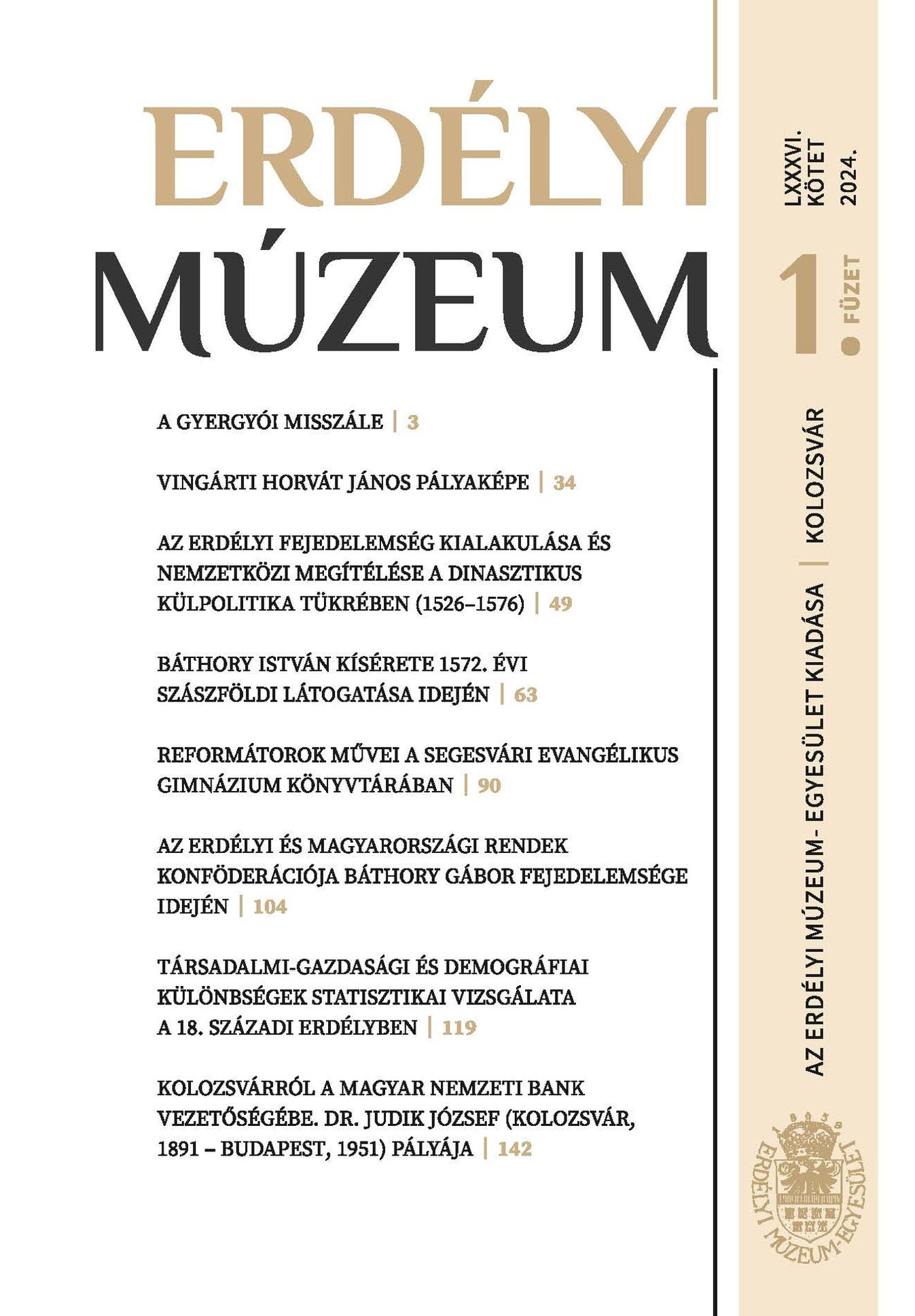Társadalmi-gazdasági és demográfiai különbségek statisztikai vizsgálata a 18. századi Erdélyben
A Statistical Analysis of Socio-Economic and Demographic Differences in 18th C. Transylvania
Author(s): Gábor Demeter, László TompaSubject(s): History, Economic history, Social history, 18th Century
Published by: Erdélyi Múzeum-Egyesület
Keywords: settlement size; denominations; statistical analysis; Transylvania; 18th century
Summary/Abstract: In our previous study we examined the role of physical geographic and ethnic features and administrative boundaries in influencing the development patterns and the distribution of settlement types (clusters) in 18th century Transylvania, using cluster analysis based on the 1750 conscription and the 1785 census data. In the present study, instead of spatial differentiation, two other factors, the role of settlement size and denominational differences are investigated, also including the Regnicolaris Conscriptio of the 1720s in our statistical analysis in addition to the abovementioned statistical sources. Our aim is to answer the following questions: (1) what kind of differences can be observed between settlements of different size, and to what extent; (2) whether the differences characteristic from the end of the 19th century to the present day for settlements of different size, have their early roots in the 18th century, or not; and finally, (3) we also intended to quantify the differences of socio-economic and demographic characteristics of denominations (and thus indirectly the socio-economic differences between ethnic groups) i.e., whether the living conditions of the peasant population were ethnically determined in the 18th c. or not.
Journal: Erdélyi Múzeum
- Issue Year: LXXXVI/2024
- Issue No: 1
- Page Range: 119-141
- Page Count: 23
- Language: Hungarian

